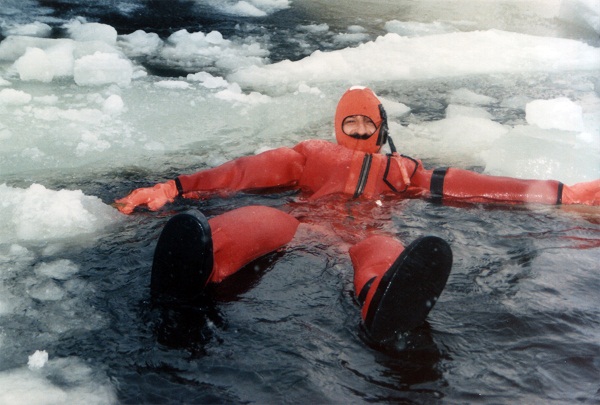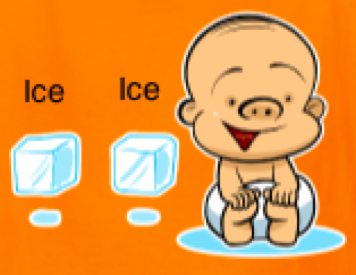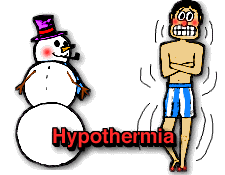This is part of a series on cold-related medical disorders.
Hypothermia is low body temperature. It’s not the “Oh, it’s cold outside” type of cold, but it is the “Oh, your life is in danger!” variety. Medically, hypothermia is a core body temperature below 95 °F (35 °C), and it can be produced by either an absolute cold exposure or sufficient heat loss beyond the body’s ability to generate a response.
What you want to know about hypothermia is the conditions and risks that set you up for it. Anyone can get hypothermia if you’re exposed to bad enough conditions, including the following:
- Being outside without sufficient clothing in cold conditions
- Being outside with wet clothing in cold and windy conditions
- Excessive exertion or insufficient food or fluids while in cold and/or windy conditions
- Excessive cold water exposure (e.g. immersion while ice fishing or boating)

Persons most likely to get hypothermic include the very old or young and those who are chronically ill or malnourished. Persons of normal health can get hypothermia if excessively fatigued or under the influence of alcohol or other drugs.
Typical symptoms of hypothermia include weakness, drowsiness, confusion and lack of coordination. Skin becomes cold, pale and frostbitten. Shivering becomes obvious and uncontrollable. Eventually, the heart and breathing rates will slow, and mental ability will progressively fade. Ultimately, the body can go into shock, and the heart and brain can cease functioning. Prolonged exposure will result in death if untreated.
For now I will leave you with the following considerations.
- If you find someone in the cold who is not responding, don’t assume s/he’s dead.
- Placing someone in direct heat, such as is given via a heating pad or lamp, or in hot water is not the approach and should not be done.
- Do not give alcohol to someone exposed to extreme cold.
In the next post in this series we will discuss treatment and prevention strategies for extreme cold exposure.
Feel free to ask your SMA expert consultant any questions you may have on this topic.
Order your copy of Dr. Sterling’s new book Behind The Curtain: A Peek at Life from within the ER at jeffreysterlingbooks.com, iTunes, Amazon, Barnes and Nobles and wherever books are sold.
Thanks for liking and following Straight, No Chaser! This public service provides a sample of what http://www.SterlingMedicalAdvice.com (SMA) and 844-SMA-TALK offers. Please share our page with your friends on WordPress, like us on Facebook @ SterlingMedicalAdvice.com and follow us on Twitter at @asksterlingmd.


